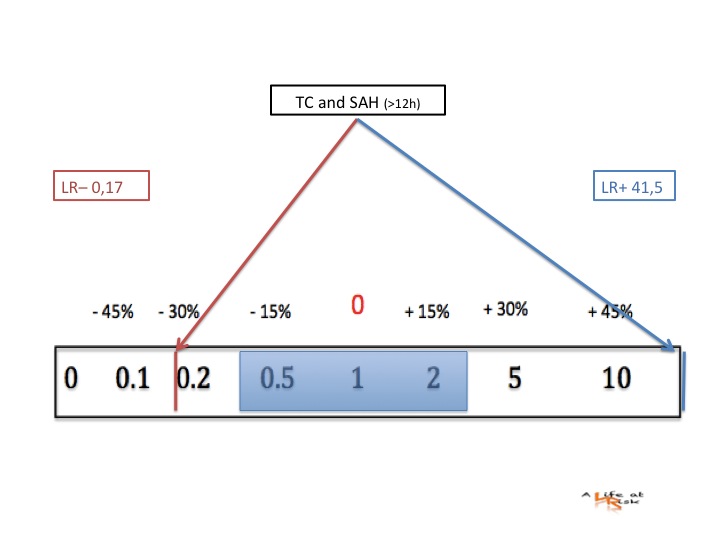A young healthy man presents to the ED because of acute onset severe headheache. The pain has started the day before while he was swimming, he refers the worst headache of his life, neurological examination and vital signs are all normal. Head CT is also normal. After therapy and short clinical observation he feels better, but the pain continues, even if less, neurological examination is still normal.
May this patient has a subarachnoid haemorrage (SAH)?



Conclusion
SAH accounts for 1% of all patients presenting to the ED with headache, but when the onset of headache is acute like the so called “thunderclap” headache, the prevalence raises to about 15%. If the patient with acute onset headache has also neurological deficit or alterated mental status the prevalence is higher but it has been not calculated (of course we are not talking about this setting).
When performed untill the first 6h of onset, head CT has a sensitivity of 100%, the more time goes by, the more blood becomes progressively less dense and more difficult to detect radiologically, so CT looses sensitivity (about 82-84% depending on the study) and in patient with a pretest probability of about 15% it is still not enogh to rule out SAH. In a condition like this where missed diagnosis may lead to significant morbidity and mortality, the diagnostic strategy must be extremely robust, so in our case a lumbar puncture is necessary.
Bibliography
Hannah Stewart at al
LP or not LP, that is the question: gold standard or unnecessary procedure in subarachnoid haemorrhage?
EMJ Online First, June 11, 2013
J.J. Perry et al
Sensitivity of computed tomography performed within six hours of onset of headache for diagnosis of subarachnoid hemorrhage: prospective cohort study
BMJ, 343 2011,
D. Backes et al
Time-dependent test characteristics of head computed tomography in patients suspected of nontraumatic subarachnoid hemorrhage
Stroke, 43 2012
Jeffrey J. Perry at al
Attitudes and Judgment of Emergency Physicians in the Management of Patients with Acute Headache
ACAD EMERG MED d January 2005


